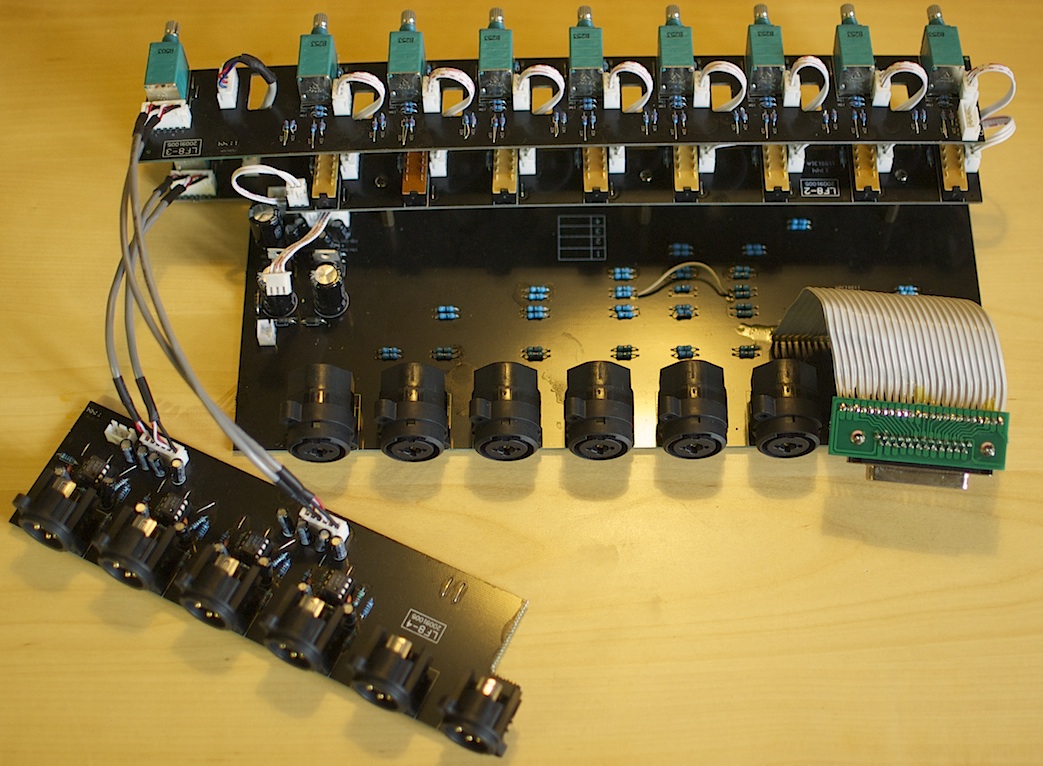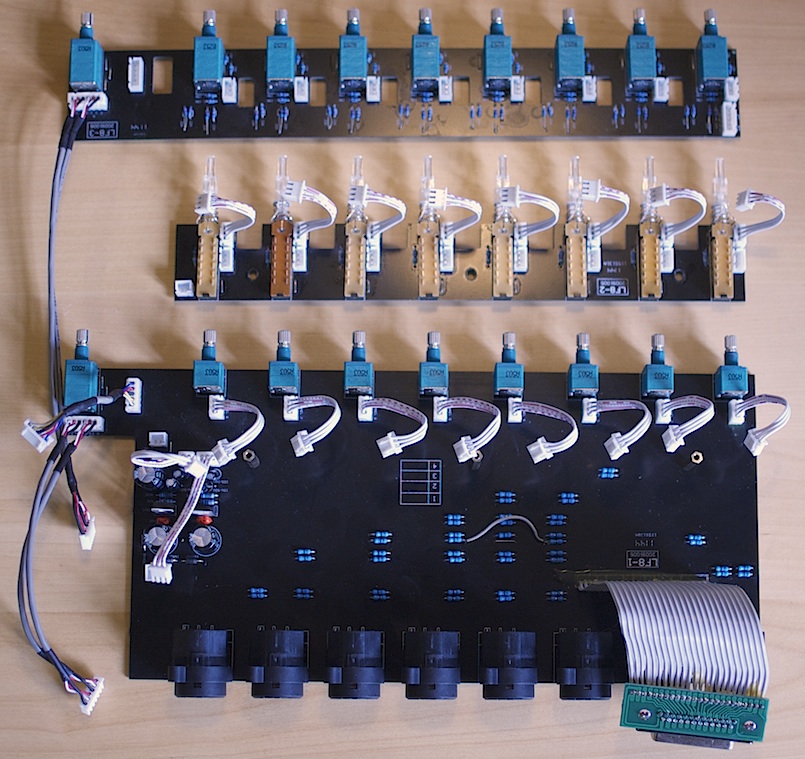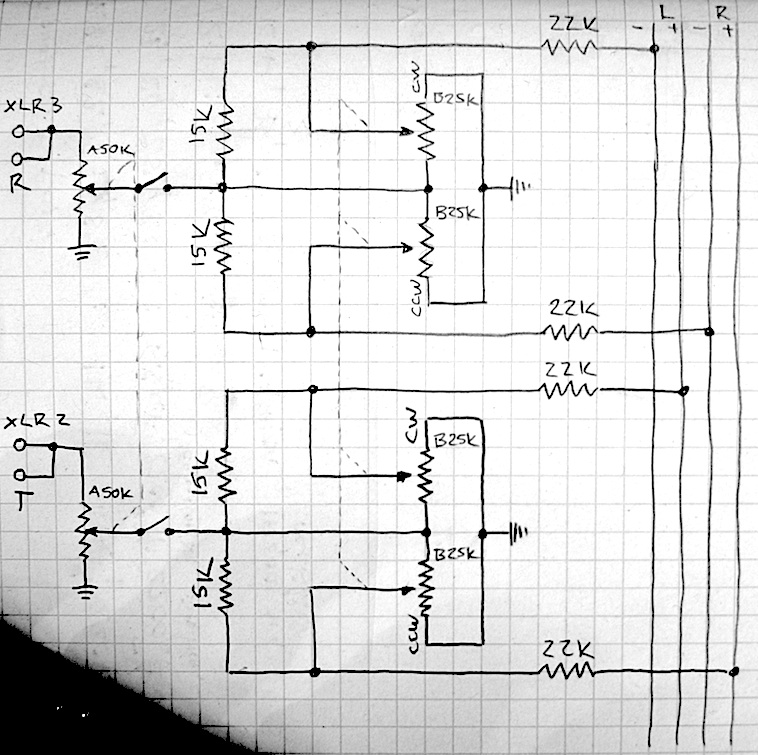I originally posted this in this thread. Since I didn't get any response I am trying here, with a new thread and a less generic title. I hope that's ok. And of course I hope to get plenty of responses 
I have just recently bought an SM Pro Audio PM8 with the purpose of modding it and sort of making it the centerpiece of my small home studio. I have the following modifications in mind:
- Changing exterior (frontpanel, knobs)
- Changing summing amp
- Adding headphone amp
- Adding 4 stereo channels with no pan/level/mute
After disassembling it, I have taken a couple of pictures of the interior:



Compared to the older pictures that were posted in the existing thread (see link above), it seems that SM Pro Audio not only changed the appearance of the PCBs, but also the circuit designs. If I am not wrong in the old pictures the circuit looks internally unbalanced (look at the pan pots and the wires going from one PCB to the other, as well as the PCB traces to the passive outputs), while now everything is balanced (4 deck pan pots and so on, see the pictures).
I traced out the circuit and it looks like this (sorry for the hand drawing, it was simply quicker ):
):

I think the mute switch is wrong in the schematic above. It should switch to ground.
This is pretty much exactly the (Forssell schematic), down to the resistor values.
Now I have some questions that I hope you experts can help me with:
- Initially, I was thinking of active summing using a Neumann V475 summing amp or something similar (I just got a TAB V372 1D, so that might be an option). However, the resistor values in the existing summing buss are far off the recommended value for those summing amps. As far as I understand (mostly from NewYorkDave's nice schematics) the pan pot should have the same value as the summing resistor, so there is no easy way to adapt the resistor values without changing the pan pot. Also all the other resistors involved are probably influencing, too. Is that all true or is there a way to adapt the design to 0-Ohm summing?
- A different solution would be to use it as passive summing buss and add a line amp card as make-up amp. I guess this is feasible. But does it have enough make-up gain? Another thing I am concerned about is the fact that apparently one should not switch channels on an off the summing buss in a passive design. Could this really be a problem? I am thinking of keeping the box always connected to my D/A, inserting outboard in between. So I will not really be disconnecting any channel. Could muting be a problem, or something else I am not thinking of?
- In general which one of the two ways above would you choose?
- I am thinking of splitting the signal after the summing amp in three paths: main out, monitor out (with additional pad) and headphone amp. Would that be ok, or should I expect some attenuation or other problems?
- If I want to add the 4 stereo channels to the summing bus as mentioned above, which value for the summing resistors should I choose for the different configurations?
Please excuse these newbie questions, but I still wasn't able to completely wrap my head around the whole active/passive summing technology...
Thanks in advance,
Mattia
I have just recently bought an SM Pro Audio PM8 with the purpose of modding it and sort of making it the centerpiece of my small home studio. I have the following modifications in mind:
- Changing exterior (frontpanel, knobs)
- Changing summing amp
- Adding headphone amp
- Adding 4 stereo channels with no pan/level/mute
After disassembling it, I have taken a couple of pictures of the interior:



Compared to the older pictures that were posted in the existing thread (see link above), it seems that SM Pro Audio not only changed the appearance of the PCBs, but also the circuit designs. If I am not wrong in the old pictures the circuit looks internally unbalanced (look at the pan pots and the wires going from one PCB to the other, as well as the PCB traces to the passive outputs), while now everything is balanced (4 deck pan pots and so on, see the pictures).
I traced out the circuit and it looks like this (sorry for the hand drawing, it was simply quicker

I think the mute switch is wrong in the schematic above. It should switch to ground.
This is pretty much exactly the (Forssell schematic), down to the resistor values.
Now I have some questions that I hope you experts can help me with:
- Initially, I was thinking of active summing using a Neumann V475 summing amp or something similar (I just got a TAB V372 1D, so that might be an option). However, the resistor values in the existing summing buss are far off the recommended value for those summing amps. As far as I understand (mostly from NewYorkDave's nice schematics) the pan pot should have the same value as the summing resistor, so there is no easy way to adapt the resistor values without changing the pan pot. Also all the other resistors involved are probably influencing, too. Is that all true or is there a way to adapt the design to 0-Ohm summing?
- A different solution would be to use it as passive summing buss and add a line amp card as make-up amp. I guess this is feasible. But does it have enough make-up gain? Another thing I am concerned about is the fact that apparently one should not switch channels on an off the summing buss in a passive design. Could this really be a problem? I am thinking of keeping the box always connected to my D/A, inserting outboard in between. So I will not really be disconnecting any channel. Could muting be a problem, or something else I am not thinking of?
- In general which one of the two ways above would you choose?
- I am thinking of splitting the signal after the summing amp in three paths: main out, monitor out (with additional pad) and headphone amp. Would that be ok, or should I expect some attenuation or other problems?
- If I want to add the 4 stereo channels to the summing bus as mentioned above, which value for the summing resistors should I choose for the different configurations?
Please excuse these newbie questions, but I still wasn't able to completely wrap my head around the whole active/passive summing technology...
Thanks in advance,
Mattia


